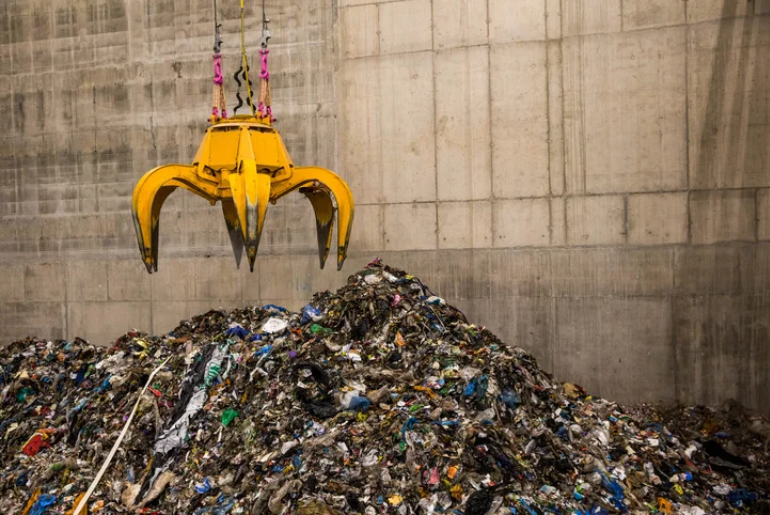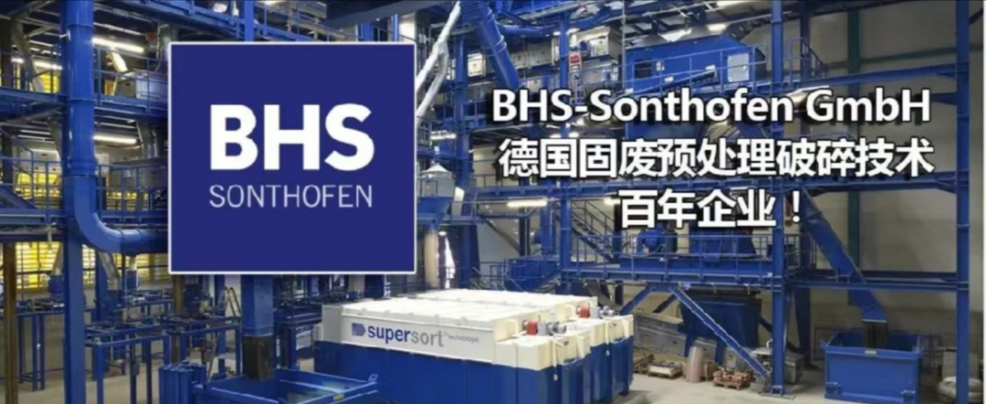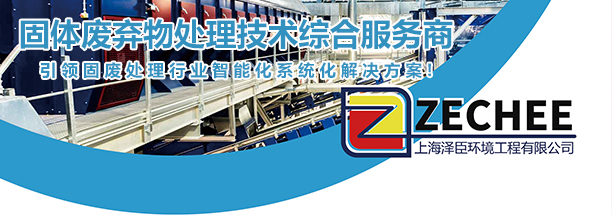欧洲和日本在东南亚推广垃圾焚烧发电技术受阻,或许中国经验更适合!
“中国的经验为面临日益严峻的废弃物问题和不断增长的能源需求的国家提供了教训”
——考特尼·韦瑟比

(Photo by Matthew Lloyd/Bloomberg via Getty Images)
在欧洲和日本等发达经济体,食物等有机垃圾仅占城市生活垃圾的 10-20%。此外,长期存在且组织良好的废物分类系统使日本能够限制最终进入焚化炉的不可燃废物(例如电子产品、金属等)的数量,从而使它们更加高效和清洁。东南亚市场垃圾焚烧发电主要担忧是,未经过分类而且截然不同的垃圾成分会影响焚烧厂的可持续性和运营效率。
“雅加达垃圾的特性不适合焚烧发电,”一位当地人士表示 “垃圾没有很好的分类,成分比较复杂而且含水率也很高。”
根据 GAIA Asia-Pacific 的数据,在东南亚,有机垃圾可占城市生活垃圾的 50%,而且垃圾分类系统有限。为了达到焚化炉有效运行所需的高温,GAIA Asia-Pacific 认为,东南亚的垃圾焚烧发电厂可能需要城市垃圾流以外的燃料,而这很可能是塑料的。
欧洲和日本或许拥有最先进、最高效的技术,但他们处理的废弃物组成与新兴经济体大不相同。中国的情况更有借鉴性。和其他新兴经济体一样,中国的废弃物往往湿度更高(垃圾分类之前),燃烧的热效率较低。
进入“十四五”规划后,国内垃圾焚烧发电市场释放量明显减少,而国内垃圾焚烧发电龙头企业早已把目光瞄准了海外市场,据公开信息显示,光大环境、三峰环境、浙能锦江环境以及中国天楹在内等多家垃圾焚烧发电企业已布局海外,在“一带一路”政策带领下,队伍逐渐壮大,海外市场亦成为各家角逐的新战场。目前东南亚国家陆续释放垃圾处理项目,这对于中国垃圾焚烧企业来讲即是机遇也是挑战。
原文参考(如需译文可通过公众号自带翻译功能翻译查看):
Facing headwinds at home, Europe and Japan are pushing waste-to-energy technology across South East Asia
There are more than 100 waste-to-energy projects recently constructed, being built or planned in the Philippines, Indonesia and Thailand that often involve European or Japanese companies. But they are attracting local opposition over their green credentials. Freelance journalists Nithin Coca, Alexandra Buba, Geela Garcia and Nicha Wachpanich report.
“The project developer said all is good,” says Kampol Wadnoi, a village leader from Thalang, in the west of Thailand, about a 7.9MW waste-to-energy plant being built near his community. “No pollution. No problem! Because it is technology from abroad, where they also do it.” The project was presented to him and other community members as modern and clean, using an advanced Hitachi Zosen incinerator from Japan and reverse osmosis wastewater treatment technology from Germany – and yet waste-to-energy plants like these are facing pushback from local communities and environmentalists across South East Asia.
For decades, waste-to-energy has been a key waste management tool in developed countries. Waste-to-energy plants are supposed to burn household and similar waste that could not be prevented or recycled (and ideally should not be landfilled). The incineration process produces energy, which can take the form of electricity (to feed into the grid), hot water (for district heating or cooling) or steam (for industry). There are more than 1,500 incinerators in Japan and countries like Germany, Sweden and Denmark burn tens of millions of tonnes of municipal waste every year, generating more than 10GW of electricity in Europe and 4.2GW in Japan.

“Waste-to-energy projects have potential health and environmental risks if they are not governed properly, but instead of having a strict monitoring regulation, Thailand is helping investors to easily and quickly invest in these projects,” says Supaporn Malailoy from EnLAW, a Thailand-based environmental legal aid group. NGOs say waste-to-energy plants often burn waste that could have been recycled or composted, produce toxic emissions and contribute to climate change.
Renewable and circular
The first modern incinerator in Japan opened in Osaka in the 1960s, using European technology. In Europe, a total of around 500 plants are in operation and approximately 40 new ones are planned or under construction, almost half of them in the UK, according to the Confederation of European Waste-to-Energy Plants.
However, Janek Vähk, climate, energy and air pollution program coordinator with the non-profit Zero Waste Europe, questions their necessity. "The industry reports very clearly say that the European market is saturated," says Vähk. The same is true in Japan, where even the industry itself acknowledges there is little space for more waste-to-energy plants.
“Waste-to-energy plants are already built all over Japan, and for now, the majority of the demand will be replacement of old plants,” says Yutaka Sugimoto, a spokesperson with Hitachi Zosen. “Also, in the long term, the population of Japan is expected to decrease, so the Japanese market is not expected to grow.”
Facing saturated home markets and increasing concerns about pollution and climate impact, plus a growing push to reduce waste, not burn it, European and Japanese waste-to-energy providers are shifting their focus to South East Asia. This region is home to 600 million people and faces a growing waste management challenge – strikingly visualised via clogged up rivers and wildlife choking on plastic.
"Disseminating these [waste-to-energy] technologies worldwide has the potential to resolve critical waste management issues, for the benefit of the environment and the society,” said Patrick Clerens, secretary-general of the business group European Suppliers of Waste-to-Energy Technology (ESWET) at the IRRC waste-to-energy congress in 2019 in Vienna, Austria.
[Keep up with Energy Monitor: Subscribe to our weekly newsletter]
Government agencies like the Japanese International Cooperation Agency (JICA) and multilateral financial institutions such as the Asian Development Bank support this by providing financial or capacity-building support to interested local governments, who see waste-to-energy as a quick fix to a growing problem.
"Many countries in Asia are panicking about landfills,” says Yobel Novian Putra, an Indonesia-based campaigner with GAIA Asia-Pacific, an environmental non-profit. “There is no space to build new landfills and [they are] trying to compensate for it by building incinerators.”
Energy Monitor identified several waste-to-energy projects in South East Asia receiving support from European government-backed aid agencies or using European technology. This includes a 36MW waste-to-energy plant in Cebu, the Philippines, which has support from Netherlands-based Amsterdam Waste Environmental Consultancy & Technology, and a 19MW plant in Pangasinan, also in the Philippines, financed by UK-based Allied Project Services. In addition, we identified a Danish government-backed project for a 15–17MW plant in Semarang, Indonesia, and an 8.7MW project in Chonburi, Thailand, backed by French companies ENGIE and Suez Environment.
Groups like ESWET emphasise that waste-to-energy should only use waste that cannot be recycled – and would otherwise be landfilled – so framing the technology as part of a circular economy. Others argue that waste-to-energy is, in fact, a renewable energy technology that can play a role in helping regions like South East Asia transition away from fossil fuels.
"Waste to energy… is renewable energy generation," says Sugimoto, adding that landfills are a major source of methane, a potent greenhouse gas. "Our technology can solve those issues, reduce pollution and contribute to power generation."
In South East Asia, Japan may be even more active than Europe, with the Japanese Ministry of Foreign Affairs, JICA and the Kitakyushu International Techno-cooperative Association all working to promote incineration. Projects in cities like Davao and Cebu in the Philippines and Bandung and Surabaya in Indonesia will use technology from major Japanese companies including Hitachi Zosen but also Marubeni, JFE Engineering and Itochu.
South East Asia's massive waste-to-energy expansion plans
According to data collected by Energy Monitor, there are more than 100 waste-to-energy projects recently constructed, being built or planned across three major South East Asian markets – Indonesia, the Philippines and Thailand.

There are 13 projects in the Philippines, six of which are already operating with a combined installed capacity of 9.69MW. There is opposition from environmental groups to these projects. However, local governments promote waste-to-energy incinerators as a "long-term solution" to their solid waste problem, and technology providers are entering into agreements with local governments, often with no bidding procedure, according to Miriam Azurin at GAIA-Philippines.
“They push all this messaging to legitimise the technology and they also frame this as a solution for sustainable cities along with the [UN] Sustainable Development Goals frameworks," says Azurin.
The most developed project is in the city of Davao, where a Japanese government-funded waste-to-energy plant is currently under construction. Residents say they were poorly consulted about the project. Meanwhile, in Cebu, which has plans for a 36MW project, garbage collectors who earn as little as 5,000 Philippine pesos ($90) per month working seven days a week have little to no idea about their community’s solid waste management plans or the impact this might have on their livelihoods.
In Indonesia, there are 17 proposed projects with a total capacity of at least 134.9MW. However, one planned for the neighbourhood of Tebet, in Jakarta, has been postponed after opposition from local community members and environmentalists.
"There is a potential for dioxin discharge from burning garbage," explains Muhammad "Anca" Aminullah, a campaigner with WALHI Jakarta, an environmental NGO that led the campaign against this project. “This will worsen Jakarta's current air quality, which is already poor.” He adds: "[We are also concerned about] odours and [noise and congestion from] the garbage trucks, because the proposed location [for the incinerator] is only about 20m from residential areas."
A 12MW project under construction in Surakarta, Central Java, with support from an Austrian company, is also facing growing grassroots pressure. "The danger of air pollution from waste treatment in the form of fly ash and bottom ash will pollute humans and cause cancer," says Fahmi Bastian, the executive director of WALHI Central Java. "The quantity and quality of the surrounding water will also be disturbed because the incinerator will use groundwater."
There are 79 waste-to-energy projects adding up to a generation capacity of around 600MW planned for Thailand. The one in Thalang has received attention due to mounting opposition to it. The local community does not feel it has been properly consulted. “If they intend to carry out a good project , why have they done everything in such a fishy manner?” says Chaloa Suwanachart, a headman of the Thalang subdistrict leading opposition to the project.
For example, the project’s initial public hearing was held at a military base located several kilometres from the community, and was filled with representatives who were not from the community. When Suwanachart pointed this out, he was sued for defamation by WPGE Phetchaburi Company (WPP), the Thai company leading the project, for 150 million baht ($3.94m), along with a journalist who reported the issue.
However, the actions of Suwanachart and others have had an impact: the incinerator is not yet operational and there is no timetable for it to start up. WPP declined an interview request in September 2022. It said there are still “some small steps" to be taken before switching on the plant.
Missing green credentials
One major concern about the expansion of waste-to-energy in South East Asia is how very different waste streams could impact plants' sustainability and operational efficiency. In developed economies like Europe and Japan, organic waste such as food only makes up 10–20% of municipal waste. Moreover, long-standing and well-organised waste segregation systems allow Japan to limit the amount of non-burnable waste such as electronics, metals and chemicals that end up in incinerators, making them efficient and clean.
"The characteristics of Jakarta's waste are not suitable for waste-to-energy," says Muhammad from WALHI Jakarta. "The waste is mixed and wet, and not well sorted."
This is a common problem. In South East Asia, according to GAIA Asia-Pacific, organic waste can make up as much as 50% of municipal waste, and there are limited formal systems for waste segregation. To reach the high temperatures that incinerators need to function effectively, GAIA Asia-Pacific believes it is likely that waste-to-energy plants in South East Asia will require fuel beyond municipal waste streams. Most likely, this will be plastic.
According to a report released in 2019 from the Center for International Environmental Law, if incineration expands globally, by 2050, global emissions from plastic incineration will increase to 309 million tonnes of CO2-equivalent.

This leads non-profits to worry that the long life spans of incinerators will lock in demand for plastic, as well as the combustion of waste and its emissions, for decades. In Japan, this has made work with communities to reduce plastic waste and implement a circular economy more difficult, says Akira Sakano, founder of the non-profit Zero Waste Japan.
"We have already invested in incineration, so there is no point for the government to invest in new facilities to promote recycling," explains Sakano. "We need plastics production to keep incinerating, so there is no incentive to invest in plastic recycling."
Japan has an effective system for recycling PET bottles, but nearly all other plastics end up in incinerators. In fact, Japan classifies waste that ends up being burned as "thermal recycling." Incineration accounts for as much as 60 percentage points of the stated 84% national plastic recycling rate.
Even proponents of incineration acknowledge that reducing emissions from waste-to-energy will be crucial for Japan to meet its 2050 climate neutrality goal; incineration currently makes up 3.2% of Japan's total greenhouse gas emissions, or 31 million tonnes of CO2 a year.
"If we want to reach a carbon neutral society, we may have to reduce waste-to-energy," says Takaoka Masaki, a professor and chair of the Waste-to-Energy Research Council at Kyoto University in Japan. "Because at present the main source of CO2 from waste is [burning] plastic [in waste-to-energy plants].” (Incinerators produce more CO2 per unit of electricity than landfills, but the latter do produce methane, a stronger greenhouse gas.)
Factor it all in, and waste-to-energy is potentially worse than using fossil fuels to generate power, argues Vähk; its dependence on plastic means it will always be a high-emissions energy source. "The energy produced by incinerators is at least 1.5 or two times more greenhouse gas-intensive than, for example, [burning natural] gas,” said Vähk. "It is the most climate-impacting way of producing energy if you have a lot of plastics in there."
Industry proponents counter that when life cycle emissions and waste inputs are taken into account, waste-to-energy is partly renewable. They also point to pilot projects in Copenhagen and Oslo that use carbon capture and storage (CCS), which they argue can make the technology carbon neutral, or even carbon negative, in future.
However, in South East Asia no waste-to-energy projects are proposing CCS. This leads some to conclude that, for this region, waste-to-energy is harmful, not only to communities but also to the region's climate and energy goals. "Oil companies are looking for a new market, plastic,” says Yobel from GAIA Asia-Pacific. "Asia is a new market for plastic and we are burning it.
"Incineration is not part of our climate solution. When people learn about the science, that incineration is dirtier than a coal plant, they feel this needs to be stopped.”
Editor’s note: This article was developed with the support of Journalismfund.eu.
来源:Energy Monitor-Facing headwinds at home, Europe and Japan are pushing waste-to-energy technology across South East Asia
end

●报名启动|SRS2023第三届中国国际土壤修复及油泥治理峰会5月齐聚南京
●第五届国际固体废弃物峰会暨污泥处理处置技术创新峰会邀您参与
- 2024-10-15
- 2024-09-24
- 2024-09-24
- 2024-09-11
- 2024-06-19
- 2024-06-13
- 2024-06-11
- 2023-11-08
- 2023-11-03
- 2023-07-19
- 2023-07-06
- 2023-07-05
- 2023-07-05
- 2023-06-28
- 2023-06-20
- 2023-06-19
- 2023-05-31
- 2023-05-31
- 2023-05-26
- 2023-05-26
- 2023-05-25
- 2023-05-24


















